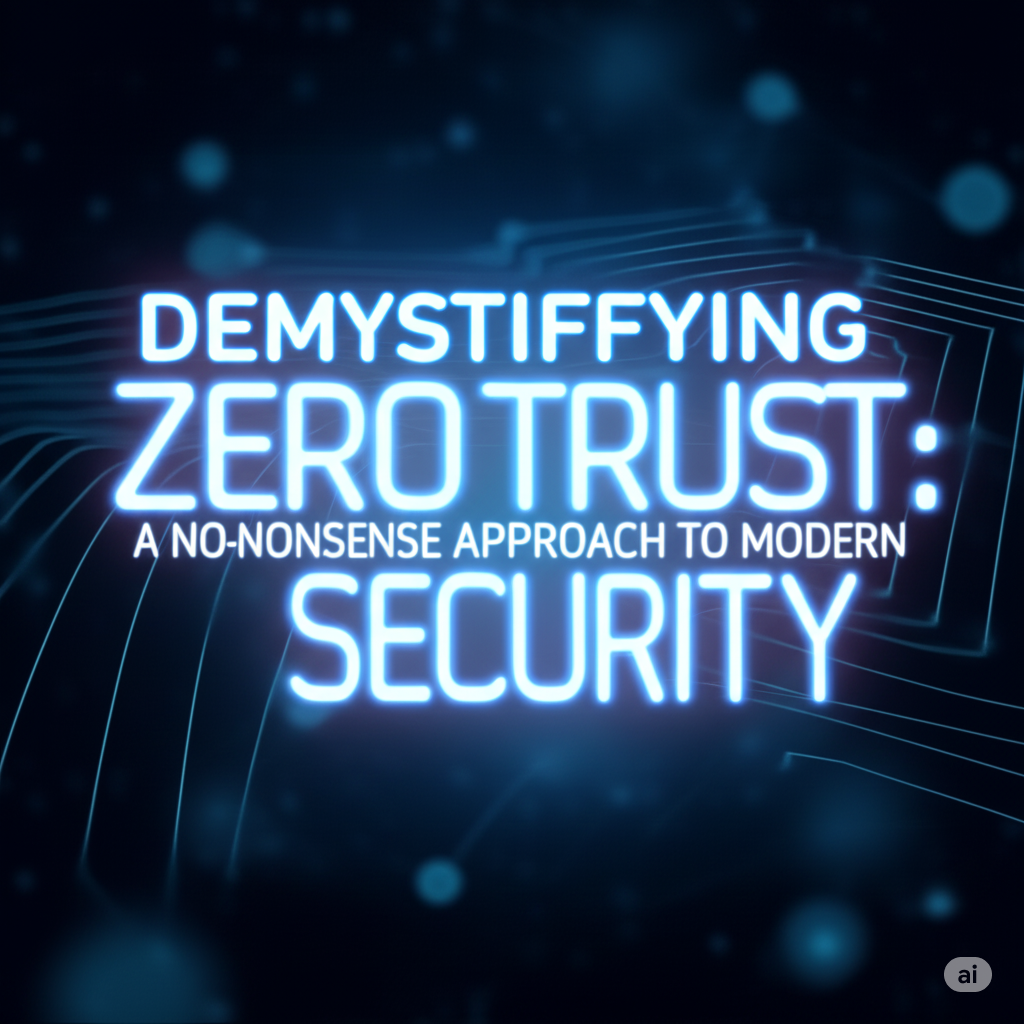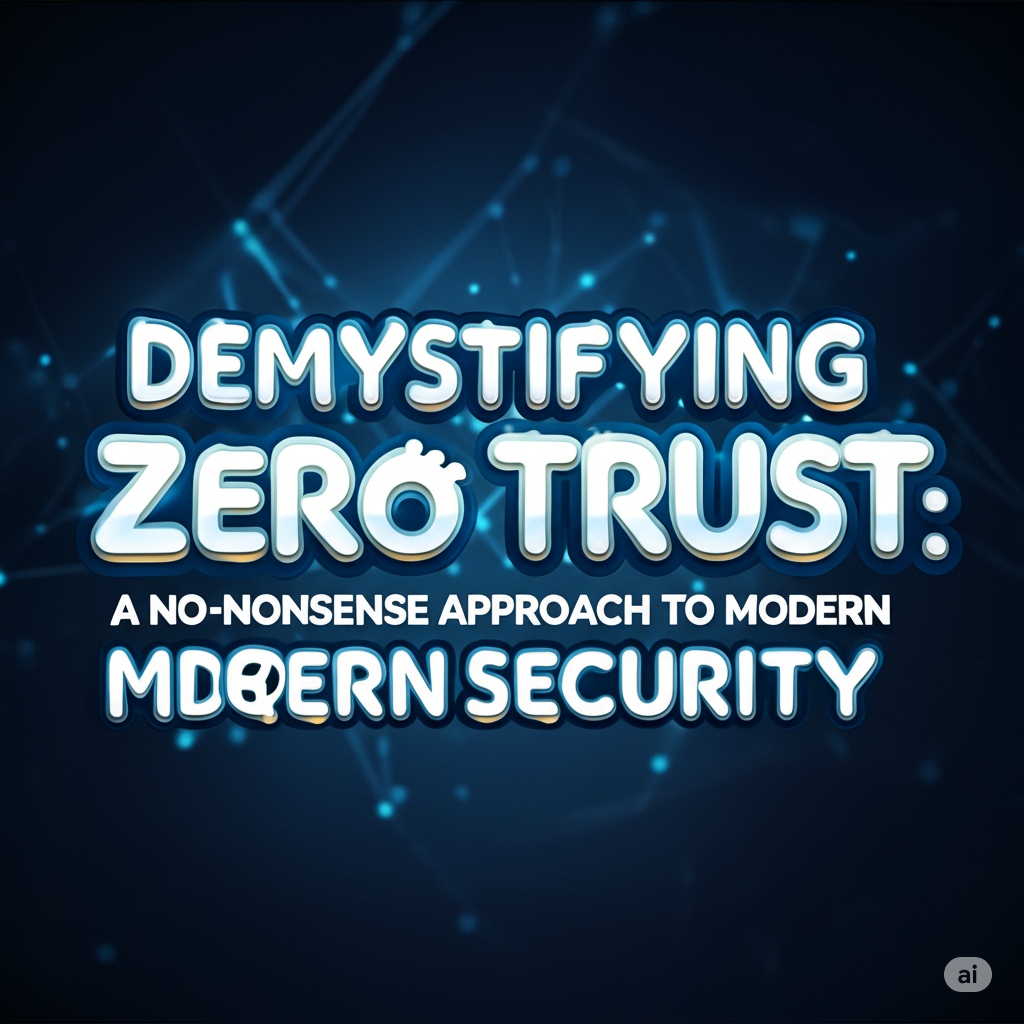Traditional security models are insufficient in today’s hyper-connected digital landscape. With more remote work, cloud services, and mobile devices than ever, securing the corporate network has become a complex challenge that perimeter-based defenses cannot adequately address. This is where Zero Trust comes into play—a revolutionary cybersecurity model that reverses the “trust but verify” mentality: never trust, always verify.
Zero Trust is more than just a buzzword, it represents a fundamental shift in how organizations approach and enforce security. Whether you are a seasoned security professional or new to IT, understanding Zero Trust is crucial for protecting modern digital environments. This article explores Zero Trust, detailing its core principles, benefits, implementation strategies, and more—without unnecessary fluff, just the essential information.
What is Zero Trust?
Let’s start with the basics. Zero Trust is a security framework operating on the principle that no user, device, or system—inside or outside the corporate network—should be trusted by default. The concept is straightforward: every access request must be authenticated, authorized, and continuously verified before access is granted. Even if you’re already “inside” the network, you are not trusted until you can prove your trustworthiness.
This approach addresses the limitations of traditional perimeter-based security, which assumes that threats primarily come from outside the network. However, today, threats can also originate from within, whether due to malicious insiders or compromised credentials. Zero Trust minimizes risk by eliminating implicit Trust.
The History and Evolution of Zero Trust
Zero Trust didn’t emerge suddenly; its development has been gradual. The term was popularized by Forrester Research analyst John Kindervag in 2010, but its foundational concepts date back even further. As early as the 2000s, organizations began questioning the effectiveness of traditional castle-and-moat security models. With the increasing incidence of data breaches and insider threats, the security community recognized that merely protecting the perimeter was insufficient.
Over the years, Zero Trust has evolved from a concept into a comprehensive framework endorsed by vendors, governments, and security professionals alike. Today, even the U.S. federal government has mandated the adoption of Zero Trust as a standard model for securing national systems.

Core Principles of the Zero Trust Model
Every security framework requires a solid foundation. For Zero Trust, this foundation is built upon several core principles:
- Never trust, always verify. Every user and device must authenticate their identity before being granted access, even within the network.
- Assume breach Operate under the belief that a security breach may have occurred. This mindset promotes proactive defense and detection strategies.
- Enforce the least privileged access. Users should only have access to the resources necessary for their job—no more.
- Microsegmentation Divide the network into smaller, secure segments to limit the potential spread of threats.
- Continuous monitoring Trust is not a one-time assessment; access permissions should be continually reevaluated using real-time data.
These principles establish a dynamic and resilient security posture that adapts to evolving threats.
Why Traditional Security Models Fail
To understand Zero Trust, it’s essential to recognize the shortcomings of traditional security methods. The old perimeter model creates a “w” ll” “around the internal network, assuming that anything inside that wall is safe. This approach was practical today, and assets were on-site. However, today’s IT environments are much more complex.
With the rise of cloud computing, remote work, bring-your-own-device (BYOD) policies, and Software as a Service (SaaS) applications, networks have extended far beyond office walls. This expansion has led to numerous data points and increased vulnerabilities. Attackers only need to breach the perimeter of Trusts freely within the network. This presents a significant risk, and Zero Trust offers a solution.
Identity as doesn’t Perimeter
One of the most significant shifts in Zero Trust is that content identity—not location—is the new perimeter. In the Zero Trust framework, it doesn’t matter where you log in from; what matters is who you are and whether you are authorized.
Identity verification includes:
- Multi-factor authentication (MFA) requires users to present multiple verification forms, such as passwords and phone-based codes.
- Single Sign-On (SSO): Simplifies access while ensuring identities are centrally managed.
- Behavioral analytics Monitors user behavior to detect anomalies, such as logging in from an unusual location or accessing files at odd hours.
By focusing on identity, Zero Trust ensures that access decisions are tied to the person—not their device or location.
Microsegmeyou’ren: Divide and Conquer
Microsegmentation is an essential strategy in the Here Trust framework. Instead of maintaining a single network where all resources are accessible once you notice, micro-segmentation divides the network into isolated segments. This approach enhances security by limiting access to only necessary resources.
- Application-level segmentation: Each application is fenced off, so users can’t move laterally between apps without proper permissions.
- Role-based access: Employees only get access to segments relevant to their roles.
- Network zoning: Traffic between zones is tightly controlled and monitored.
This makes it harder for attackers to spread across the network—their movement is severely restricted even if they get in.
Least Privilege Access Explained
The principle of least privilege is a simple yet powerful concept: provide users with the I can’t access level necessary for their job. Nothing more.
- Limits attack surface: Fewer privileges mean fewer opportunities for misuse.
- Prevents lateral movement: If a hacker compromises an account, they can’t use it to access unrelated systems.
- Improves accountability: Tracing actions back to specific users is easier with tightly scoped access.
Implementing least privilege requires role-based access control (RBAC), identity governance, and continuous access reviews.
The Role of Endpoint Security in Zero Trust
Endpoints—laptops, phones, and tablets—are common attack vectors. Securing these endpoints is critical in a zero-trust environment. Adequate endpoint security includes:
- Device posture checks: Ensures devices meet security standards before granting access.
- Endpoint detdevice’snd response (EDR): Continuouuser’snitors endpoints for signs of malicious activity.
- Remote wipe capabilities: Allows admins to wipe sensitive data from lost downloaded devices.
Zero Trust makes a device’s health as important as the user’s identity. If either is questionable, access is denied.
Continuous Monitoring and Adaptive Access
Traditional security policies are no longer sufficient. Zero Trust focuses on continuous monitoring—real-time observation of user behavior, network activity, and system health.
- Adaptive access controls: Access levels can change dynamically based on risk level. For example, logging in from a trusted device in a known location grants full access, while logging in from a new device might trigger a step-up authentication.
- Anomaly detection: Real-time alerts when something unusual happens, like an employee accessing data they’ve never touched before.
- Automated responses: Quarantine suspicious devices orit’sounts immediately to prevent escalation.
This kind of intelligent monitoring helps catch threats early and reduce potential damage.
Challenges in Zero Trust Implementation
Zero Trust is powerful—but it’s not plug-and-play. Implementing it comes with challenges:
- Cultural resistance: Employees and IT staff may push back against new restrictions.
- Legacy systems: Older infrastructure may not support modern authentication and segmentation.
- CoTrust’sy: Designing and enforcing granular policies can be resource-intensive.
- Initial investment: Tools like IAM platforms, MFA, and EDR systems require budget and training.
Despite these hurdles, Zero Trust’s benefits make it a worthwhile investment. Starting small—like rolling out MFA or segmenting critical apps—can ease the transition.
Zero Trust in the Cloud
As organizations transition to the cloud, Zero Trust becomes increasingly essential. Cloud environments are dynamic, distributed, and often beyond direct corporate control. Key strategies for implementing Zero Trust in the cloud include:
- Cloud Access Security Brokers (CASB): Provide visibility and control over cloud services.
- Policy-based access controls: Enforce who can access which cloud resources and under what conditions.
- Integration with IAM and SIEM tools: Ensure consistent identity and event management across environments.
The perimeter is gone with the cloud—Zero Trust helps rebuild it using identity, device health, and context.
Benefits of Adopting Zero Trust
Implementing a zero-trust model provides numerous advantages:
- Reduced risk of breaches: By limiting access and verifying everything, you close many doors to hackers who exploit.
- Improved compliance: Many regulations (like GDPR and HIPAA) require strong access controls, which Zero Trust provides.
- Stronger visibility: Continuous monitoring means better insight into what is happening on your network.
Resilience to insider threats: No one gets a free pass—not even internal users. Zero Trust intensely creates a tighter, smarter security posture that is more aligned with today’s distributed work environments.
Final Thoughts: Zero Trust is the Future of Cybersecurity
Zero Trust is not a silver bullet but represents the structural evolution in cybersecurity thinking. As threats become more sophisticated and networks increasingly complex, relying on outdated security models can lead to disaster. Zero Trust offers organizations an adaptive and resilient security framework that aligns with how we operate today; rather than how we worked ten years ago, which isn’t focusing on identifying and reducing Trust and continually verifying every request, Zero Trust establishes a more robust foundation for secure operations. Whether you are an IT leader, a security engineer, or a small business owner, adopting Zero Trust is not just a wise decision—it’s necessary.













